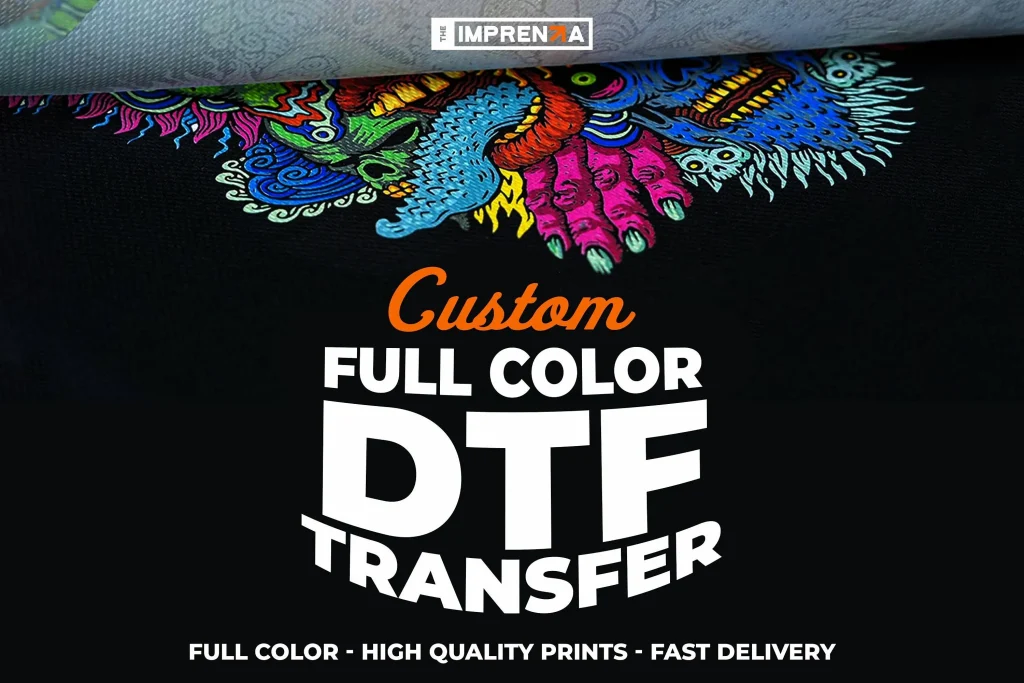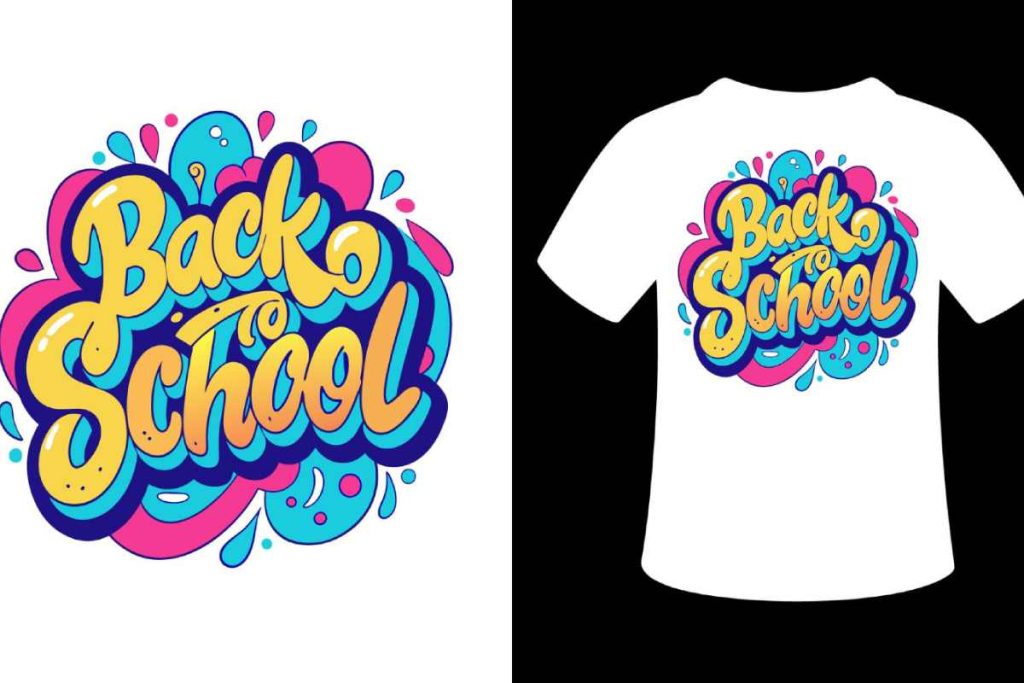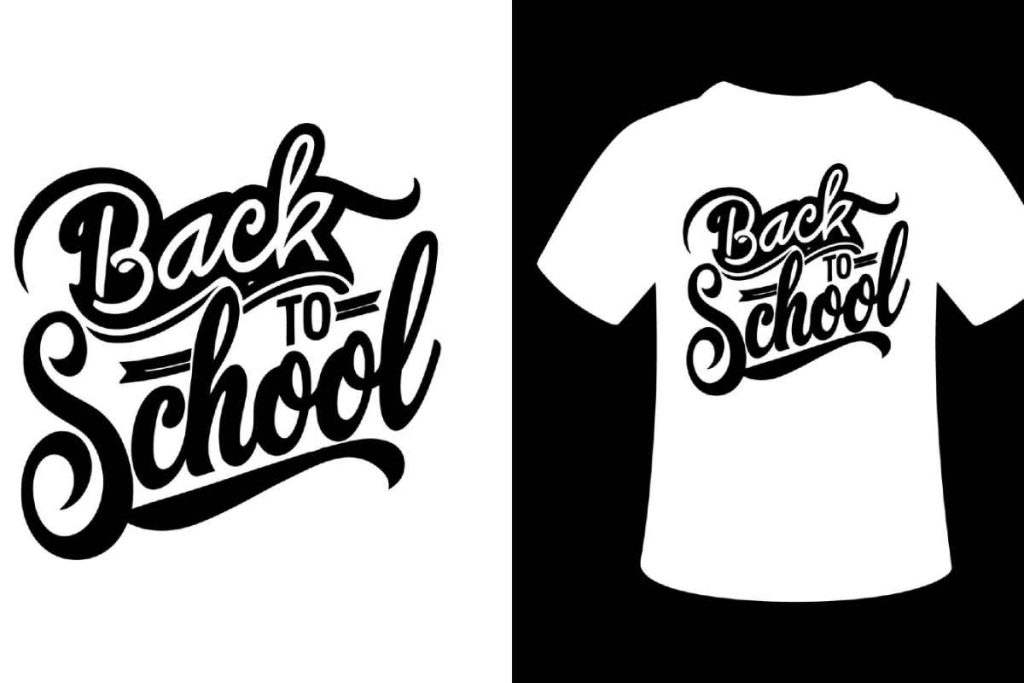DTF transfers, or Direct-to-Film transfers, have revolutionized the way we approach custom apparel printing. This innovative technique allows for vibrant designs to be easily transferred onto various types of fabric, making it increasingly popular among businesses and crafters alike. By understanding the DTF transfer process, you can leverage its advantages—such as impressive detail and efficiency—to enhance your product offerings. As consumers demand more personalized clothing options, diving into DTF printing could be your gateway to thriving in the competitive custom apparel market. Whether you’re a seasoned print professional or a passionate beginner, harnessing this technology can elevate your creative projects to new heights.
When we talk about custom graphic transfers, one method that stands out is the Direct-to-Film approach, which has gained traction in recent years for its remarkable capabilities. This printing technique not only ensures that designs can be reproduced with stunning detail but also provides a versatile solution for a range of materials—from textiles to accessories. As demand for personalized apparel continues to rise, this form of custom printing offers both businesses and individuals the chance to create tailored products that resonate with their target audience. Understanding the nuances of transferring imagery directly onto fabric opens up exciting opportunities for those looking to leave their mark in the apparel industry. For anyone eager to embark on this printing journey, exploring the mechanics and advantages of Direct-to-Film printing is a smart starting point.
What is DTF Printing?
Direct-to-Film (DTF) printing is an innovative technology that allows for vibrant, detailed images to be transferred onto fabric. Unlike traditional screen printing, which often requires multiple screens for different colors, the DTF process simplifies the procedure by using a special transfer film. This method starts by printing the desired design onto a film with high-quality DTF inks, known for their vibrancy and accuracy. As the first stage of production, this printing process is crucial for achieving the end result, where the design consists of rich colors and finely detailed lines.
Once the design is printed, the key steps continue with the application of an adhesive powder that binds the ink upon heating. This transformation is essential, as the adhesive allows the design to firmly adhere to various fabrics—from cotton to blends—yielding high-quality results suitable for commercial use. Furthermore, the flexibility of DTF printing enhances its appeal for businesses seeking to produce a diverse range of products, including t-shirts, bags, and more.
The DTF Transfer Process Uncovered
The DTF transfer process is multifaceted, combining digital precision with tactile application techniques. After you print the design onto the DTF film, it’s imperative to sprinkle adhesive powder while the ink is still wet. This crucial step ensures that the powder sticks to the ink and sets the stage for the next phase—heat transfer. The design is then positioned on the desired fabric, and a heat press application follows. The heat and pressure work in tandem to activate the adhesive, allowing for a seamless bond with the fabric, resulting in a durable print.
This step-by-step approach exemplifies why the DTF printing technique is garnering attention in the custom apparel industry. Not only does it allow for elaborate designs, but it also yields long-lasting prints that withstand the test of time and wear. As businesses increasingly strive for high-quality outputs with less environmental waste, knowing the DTF transfer process becomes a pivotal advantage for brand differentiation in a competitive market.
Advantages of DTF Printing of Custom Apparel
The advantages of DTF printing are numerous, making it an attractive option for custom apparel businesses. One significant benefit is its versatility; it can cater to various fabric types efficiently. Whether you’re working with cotton, polyester, or stretchy blends, DTF printing maintains consistent quality and color vibrancy. This opens up possibilities for creating diverse products that meet customer demands, thereby enhancing your product offering.
Another important advantage lies in the eco-friendly aspect of DTF printing. Compared to traditional screen printing, which often produces considerable waste, DTF printing minimizes excess material through a more precise application process. This reduction not only aligns with sustainable practices but also helps lower operational costs, benefitting both the environment and your bottom line. As more companies aim for greener practices, incorporating DTF printing can be a strategic move.
Considerations Before Starting DTF Printing
Before embarking on your DTF printing journey, it’s vital to weigh some key considerations to ensure a smooth transition into this exciting industry. First and foremost is the investment required. Starting with the right equipment—a quality DTF printer, a reliable heat press, film, and adhesive powder—can be costly, albeit often less than other printing methods like screen printing. Preparing a detailed budget that includes these items and additional consumables can set you up for long-term success.
In addition to financial considerations, understanding the skills necessary for effective DTF printing is essential. Mastering technical aspects such as printer settings and heat press applications can initially seem daunting, especially for newcomers. Training resources, including online workshops and group courses, are invaluable in helping you gain the expertise needed to achieve consistently high-quality prints. Setting aside time for learning and practice is fundamental as you start in this vibrant industry.
Market Trends Favoring DTF Printing
The landscape within the custom apparel market continues to evolve, with DTF printing claiming a remarkable position amidst growing trends. The demand for personalized products is on the rise, with customers seeking unique designs that express individuality. As a result, businesses that pivot to DTF printing tap into this lucrative market, benefiting from its efficiency and versatility that meet changing consumer preferences.
Moreover, the minimal setup time needed for DTF printing compared to traditional methods offers a compelling edge. Startups can quickly enter the market without extensive lead times for equipment setup or preparation. This immediacy appeals to budding entrepreneurs and established brands alike, who strive to maximize output and respond to market trends as swiftly as possible. Keeping an eye on these trends and aligning your business strategies with them can significantly enhance your market positioning.
Starting Your DTF Printing Journey
If you’re set to start your DTF printing adventure, the first step is to gather the right training resources. Investing in your education can make a significant difference in mastering the DTF process. Many online platforms offer comprehensive tutorials, while local workshops may provide hands-on experience. Both avenues are excellent for learning about the intricacies of DTF printing and enhancing your skill set.
In addition to formal education, engaging with community forums dedicated to DTF printing can provide ongoing support. These spaces foster connections among newcomers and experienced professionals, facilitating knowledge sharing and troubleshooting common issues. Engaging in community discussions, asking questions, and learning from the challenges others faced can smoothen your transition into this innovative printing technique.
Frequently Asked Questions
What is the DTF transfer process and how does it work?
The DTF transfer process involves a few key steps to ensure high-quality prints. First, a design is printed onto a specialized DTF film using a DTF printer equipped with vibrant DTF inks. After printing, an adhesive powder is applied while the ink is wet. This powder adheres to the design, and then the film is placed on the fabric and pressed with a heat source. The heat activates the adhesive, bonding the design to the fabric, making DTF transfers a versatile choice for many materials.
What are the advantages of DTF printing compared to other methods?
The advantages of DTF printing include its versatility across different fabric types, exceptional color vibrancy, and the ability to detail intricate designs. Unlike screen printing, DTF tends to produce less waste, making it more environmentally friendly. Additionally, DTF printing allows for quick setup and minimal lead times, making it ideal for custom apparel businesses looking to offer diverse products efficiently.
How do I start DTF printing as a beginner?
To start DTF printing, begin by acquiring the necessary equipment, including a DTF printer, heat press, DTF film, and adhesive powder. It is also essential to invest time in training to understand the DTF transfer process thoroughly. Many resources and online courses are available to help beginners master the intricacies of DTF printing, ensuring optimal results from the start.
What types of fabrics can be used for DTF transfers?
DTF transfers can be applied to a wide variety of fabrics, including cotton, polyester, and fabric blends. This adaptability makes DTF printing an excellent choice for custom apparel, as you can create designs on T-shirts, hoodies, bags, and more, catering to a broad customer base and diverse products.
Are there any specific skills required to master DTF printing?
Successful DTF printing requires a certain level of technical skill, particularly in operating the DTF printer and heat press effectively. Understanding printer settings, managing heat and pressure, and applying the adhesive correctly are vital skills. Many beginners find training resources, workshops, and community forums helpful for developing these skills as they start their DTF printing journey.
What trends are currently influencing the demand for DTF printing in custom apparel?
Current trends in the custom apparel market show a rising demand for personalized, high-quality prints at a quick turnaround time. DTF printing’s efficiency and versatility have made it a favored choice among small businesses and entrepreneurs. The increasing popularity of custom designs and the ability to print on various materials are key factors driving the trend towards DTF transfers in the apparel industry.
| Key Component | Details |
|---|---|
| DTF Printing Process | Involves printing on DTF film, applying adhesive powder, and using heat press to transfer designs. |
| Advantages | Versatile across fabric types, vibrant colors, less waste compared to screen printing. |
| Considerations Before Starting | Requires investment in equipment, some skill learning necessary for quality results. |
| Market Demand | Growing personalized custom apparel market, efficient and minimal setup requirements. |
| Getting Started | Utilize training resources and community support for guidance on DTF printing. |
Summary
DTF transfers are revolutionizing the custom apparel industry, providing businesses with innovative ways to produce high-quality prints that resonate with customer demands. By mastering the DTF printing process, entrepreneurs and novices alike can tap into a market that emphasizes personal expression and creativity. Understanding the fundamentals of DTF transfers, from printing techniques to material compatibility, empowers you to create a diverse range of products that meet evolving trends. With the continuous growth in demand for customized apparel, now is the perfect time to explore DTF printing and establish a successful venture.



